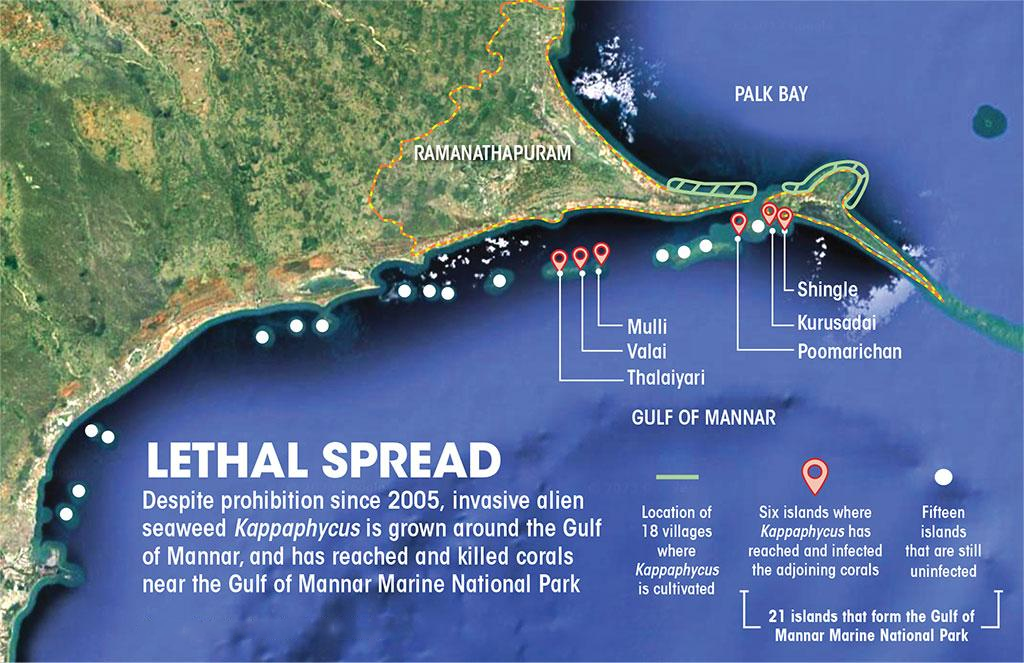Gulf of Mannar | 20 Aug 2025
The Gulf of Mannar (GoM) in Tamil Nadu, severely affected by coral bleaching has implemented artificial reef restoration using triangular and perforated trapezoidal modules placed underwater via divers.
- Concrete frames successfully hosted various coral species, boosting coral cover, survival rates, and fish density, while reducing bleaching impacts and enhancing community awareness, capacity, and livelihoods.
Gulf of Mannar
- The Gulf of Mannar, part of the Laccadive Sea in the Indian Ocean, lies between the southeast coast of India and the northwest coast of Sri Lanka, encompassing 21 islands.
- It is bounded by Rameswaram, Adam’s (Ram setu) Bridge, and Mannar Island (Sri Lanka), and rivers like the Tambraparni (India) and Malvathu Oya River (Sri Lanka) flow into the gulf.
- The gulf hosts the Tuticorin port and is known for pearl banks and the sacred chank (a gastropod mollusk).
Gulf of Mannar Marine National Park & Biosphere Reserve:
- The Marine National Park (162.89 km²), established in 1982 under the Wildlife (Protection) Act, 1972, hosts coral reefs, mangroves, seagrass beds, estuaries, mudflats, sandy shores, marshes, and rocky coasts, supporting 117 coral species, over 450 fish species, and threatened species like sea cow (Dugong dugon), whale sharks, and sea turtles.
- The Gulf of Mannar Biosphere Reserve (10,500 km²) established in 1989 and recognized by UNESCO in 2001 includes 21 islands and surrounding coastal areas.
- It encompasses the Marine National Park and is the first Marine Biosphere Reserve in South and South-East Asia, serving as a crucial hub of marine biodiversity.
| Read More: Hydrocarbon Exploration in Gulf of Mannar, Coral Breach in Gulf of Mannar |

